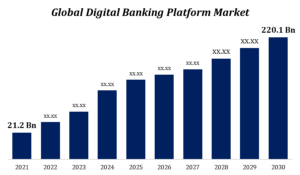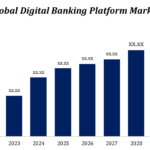Cryptocurrencies Unveiled: Exploring the World of Digital Money and Blockchain
Cryptocurrencies, a revolutionary form of digital money, have taken the financial world by storm. Enabled by blockchain technology, cryptocurrencies offer a decentralized, secure, and borderless means of conducting transactions and storing value. As the popularity of cryptocurrencies continues to grow, understanding their underlying technology and potential impact becomes increasingly important. In this blog, we will delve into the world of cryptocurrencies, demystify blockchain technology, and explore the various facets of this transformative financial innovation.
Understanding Cryptocurrencies:
- Digital Gold: Cryptocurrencies, such as Bitcoin and Ethereum, are often referred to as “digital gold” due to their potential to serve as stores of value and alternatives to traditional forms of money.
- Decentralization: Unlike traditional currencies issued by governments and central banks, cryptocurrencies operate on decentralized networks, eliminating the need for intermediaries and providing greater control to users.
- Blockchain Technology: Cryptocurrencies are built on blockchain, a distributed and tamper-resistant ledger that records all transactions. Blockchain ensures transparency, security, and immutability.
- Anonymity vs. Transparency: While cryptocurrencies offer pseudonymous transactions, the blockchain’s transparent nature allows anyone to view transaction history, promoting accountability.
- Global Accessibility: Cryptocurrencies enable borderless transactions, making it possible to send and receive money internationally with reduced fees and processing times.
Exploring Blockchain Technology:
- Decentralized Ledger: Blockchain is a series of interconnected blocks, each containing a record of transactions. This decentralized ledger ensures that no single entity has control over the entire network.
- Consensus Mechanisms: Blockchain networks use consensus mechanisms, such as Proof of Work (PoW) and Proof of Stake (PoS), to validate and authenticate transactions, ensuring network security.
- Smart Contracts: Smart contracts are self-executing contracts with terms directly written into code. They automate and verify contract execution, reducing the need for intermediaries.
- Tokenization: Blockchain enables the creation of digital tokens that represent real-world assets, enabling fractional ownership and opening new avenues for asset management.
Cryptocurrency Use Cases:
- Digital Payments: Cryptocurrencies offer a convenient and efficient way to conduct digital transactions, especially for cross-border payments.
- Remittances: Cryptocurrencies can significantly reduce remittance costs and processing times for individuals sending money abroad.
- Decentralized Finance (DeFi): DeFi platforms leverage cryptocurrencies and blockchain to offer a range of financial services, including lending, borrowing, and trading, without traditional intermediaries.
- Tokenization of Assets: Real estate, art, and other valuable assets can be tokenized on blockchain, enabling fractional ownership and increased liquidity.
Cryptocurrencies and blockchain technology have ushered in a new era of financial innovation and disruption. As the world explores the potential of digital money, understanding the fundamental concepts of cryptocurrencies and blockchain becomes crucial. Whether it’s revolutionizing traditional financial services, enabling decentralized applications, or transforming industries through tokenization, the impact of cryptocurrencies on the global economy is undeniable. As this exciting journey unfolds, the exploration of cryptocurrencies and blockchain continues to reshape how we perceive, store, and exchange value in an increasingly digital world.
Top of Form


































